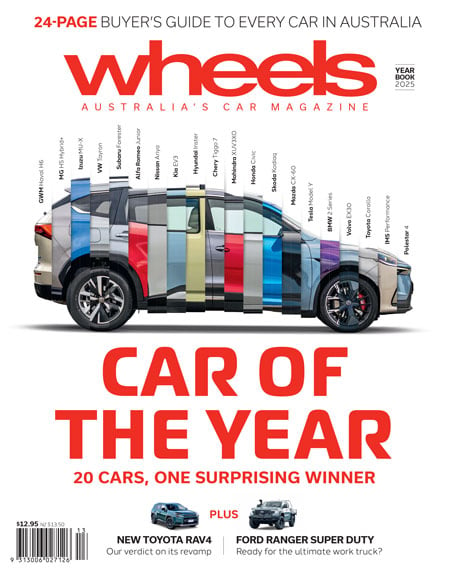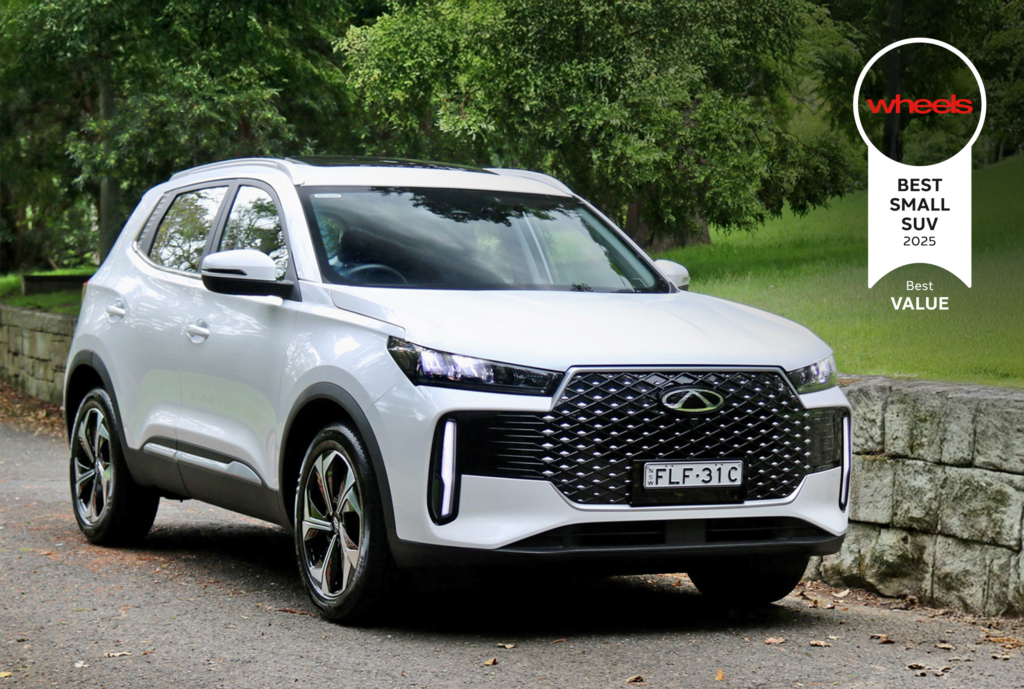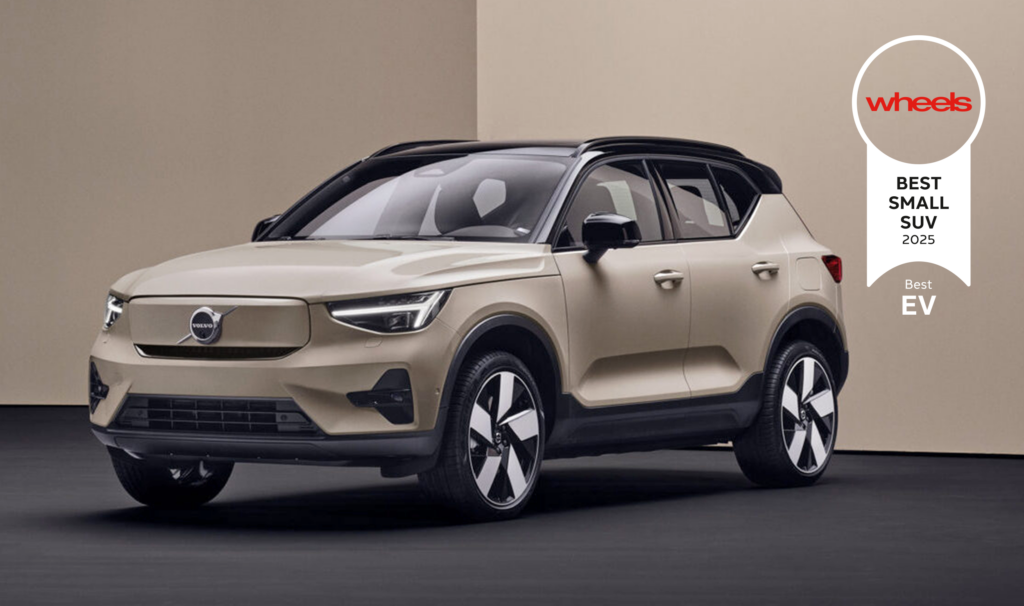The Contenders
- Hyundai Kona Hybrid
- Toyota Yaris Cross
- Subaru Crosstrek
- Honda HR-V
- MG ZS Hybrid+
- Toyota Corolla Cross
- Mitsubishi Eclipse Cross Plug-in Hybrid
- Nissan Qashqai e-Power
- Toyota C-HR
- Kia Niro Hybrid
- Peugeot 2008
- Cupra Formentor VZe
- Land Rover Range Rover Evoque PHEV
- Lexus LBX
- Lexus UX
Winner: Hyundai Kona Hybrid

- Price: From $36,500 plus on-road costs
- Drivetrain: 1.6L hybrid 4-cylinder petrol engines, 104kW/265Nm, 6-speed dual-clutch auto
- Combined fuel economy, CO2 emissions, fuel type: 3.9L/100km, 88g/km, 91RON
- Warranty: Five-year/unlimited km and 8-year/160,000km battery, 12 months’ roadside assistance with each dealer service
- Five-year service cost: $2,575 ($515 per year)
| Driving | |
|---|---|
| Interior | |
| Practicality | |
| Overall value |
Things we like
- Wide range of variants
- More practical than the last Kona
- Well equipped across the range
Not so much
- $4,000 charge for hybrid drivetrain
- Cabin quality could be better
- Hybrid costs more to service
The second-generation Hyundai Kona has been on sale in Australia for over a year now and, like its predecessor, is proving popular with over 17,000 sold last year alone. The new Kona is larger, more mature, more refined and features an optional hybrid drivetrain for the first time locally, which we think is the model to choose.
Where the Kona has seen the biggest improvement is in its interior design as it’s now more up-to-date than the previous Kona, which felt dated in comparison to newer Hyundai models. The Kona’s cabin could be better quality, but there’s no denying the awesome practicality and pleasing ergonomics throughout.
The rear seat of the new Kona is larger than the old one and two adults will fit perfectly fine this time around. The boot is also larger now at 407-litres seats up and 1,241L with them folded, while there are some clever tricks like a dual-level boot floor to help practicality further. Impressively, all models feature a spare wheel.
This time around are a choice of three drivetrains: a naturally aspirated 2.0-litre petrol, a 1.6-litre hybrid or a turbocharged 1.6-litre, all mated to – CVT, dual-clutch and torque converter respectively – automatic transmissions. The former two are front-wheel drive, with the turbo engine exclusively all-wheel drive in Australia. The new Kona drives well with a great ride quality and improved refinement as well, especially with road noise.
Overall, the new Hyundai Kona is a worthy competitor in the small SUV segment thanks to its all-round ability: it’s much more practical this time around, good to drive, more practical, cheap to service and – finally – offers a hybrid choice.
Toyota Yaris Cross
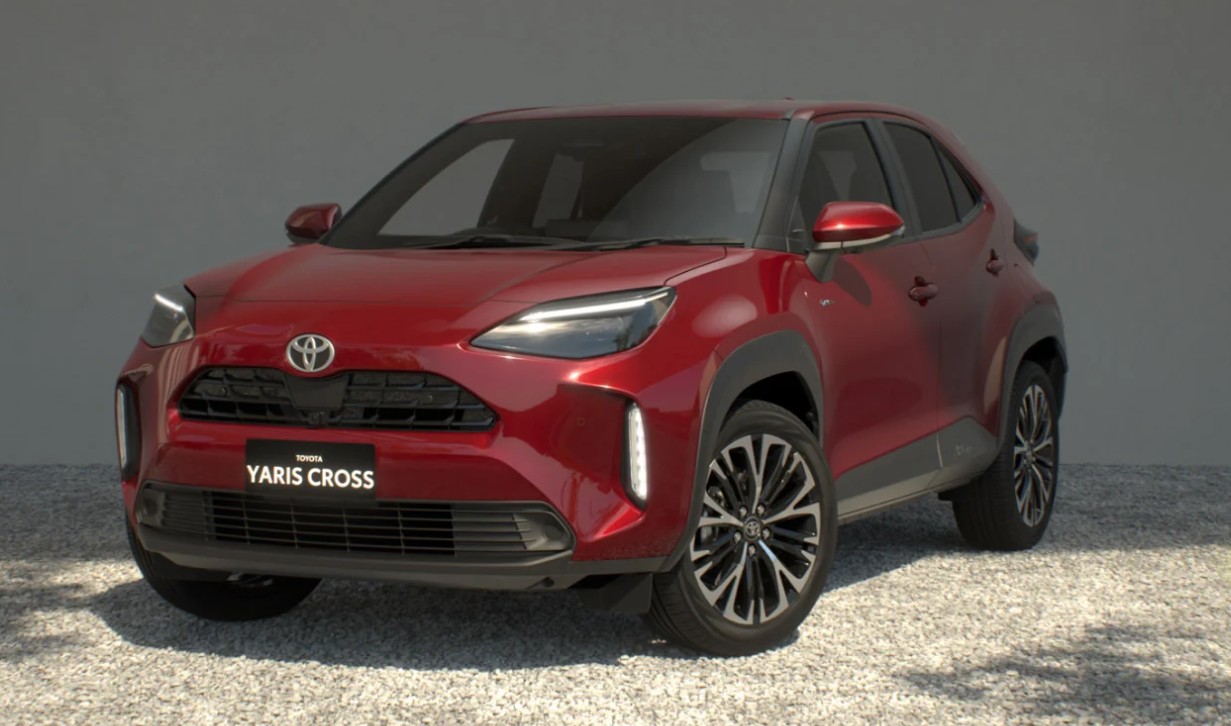
- Price: From $30,900 plus on-road costs (GX 2WD)
- Drivetrain: 1.5L 3-cylinder hybrid, 85kW, CVT auto, 2WD or AWD
- Combined fuel economy, CO2 emissions, fuel type: 3.8-4L/100km, 86-90g/km, 91RON
- Warranty: Five-year/unlimited km and 8-year/160,000km battery, no roadside assistance
- Five-year service cost: $1,275 ($255 per year)
| Driving | |
|---|---|
| Interior | |
| Practicality | |
| Overall value |
Things we like
- Excellent fuel economy in the real world
- More practical than its size suggests
- Even the base model is well equipped
Not so much
- European models get more equipment
- More refinement would be good
- Rear seat not huge
The Toyota Yaris Cross is the smallest SUV that the company sells in Australia. The Yaris Cross is like its Corolla Cross sibling: larger and more practical, though using the same name as the car on which it’s based – in this case, the Yaris hatchback. Pricing starts at $30,900 for the entry-level GX and like all other non-performance/4WD/commercial Toyotas sold locally, the Yaris Cross is now only offered in hybrid form.
Under the bonnet is a 1.5-litre three-cylinder hybrid drivetrain making 85kW, which sends power to either the front or all wheels via a CVT gearbox. The claimed fuel consumption for the Yaris Cross ranges from just 3.8L/100km for 2WD models to 4L/100km for the slightly heavier AWD model, which is excellent. You’ll likely get similar consumption in real life too.
On the road, the Yaris Cross impresses with solid driving dynamics and a comfortable ride quality, though refinement could be better as both engine and road noise make themselves known.
The cabin of the Yaris Cross is good quality and funky, and a recent update gave it a digital driver’s display and new infotainment software to make it more modern and user-friendly inside. There are multiple storage spots, while the new central armrest has made it more comfortable. While the back seat isn’t huge, it will take two adults fine. The 390-litre boot is actually larger than all-wheel drive Corolla Cross models, though it shrinks to 316L with its own AWD system fitted.
Like the Corolla Cross, five-year servicing for the Yaris Cross is cheap and both its mechanical and battery warranties are extended by servicing through a Toyota dealership. Overall, the Yaris Cross is an excellent entry-level SUV that’s very fuel efficient, nice to drive and good quality, though it could be more refined and cheaper across the range.
Subaru Crosstrek
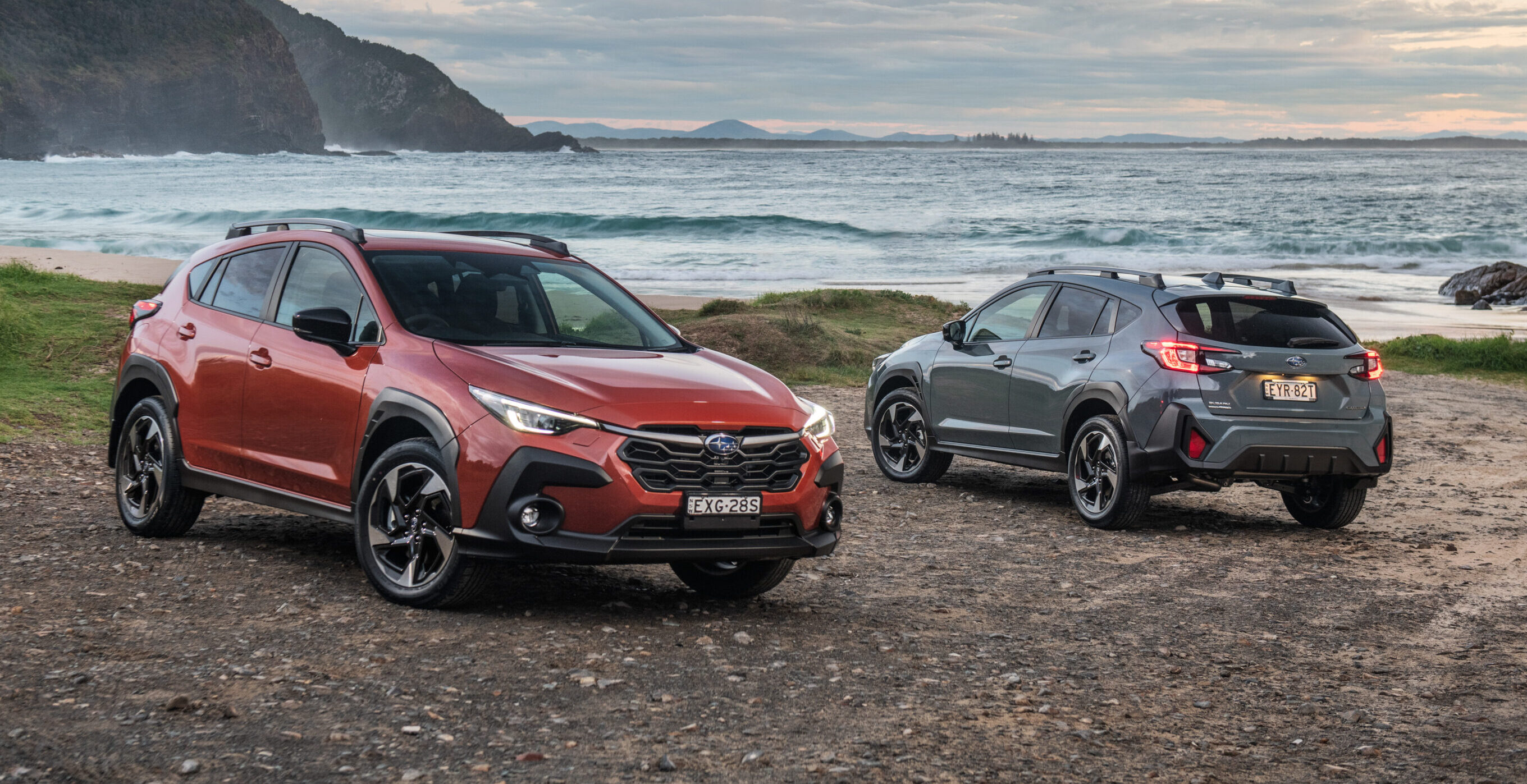
- Price: From $35,490 plus on-road costs (2.0L)
- Drivetrain: 2.0L 4-cylinder petrol or hybrid engine, 115kW/196Nm or 110kW/196Nm, CVT auto
- Combined fuel economy, CO2 emissions, fuel type: 6.5L-7.2/100km,147-165g/km, 91RON
- Warranty: Five-year/unlimited km, 12 months roadside assistance
- Five-year service cost: $2,373.19 ($474 per year)
| Driving | |
|---|---|
| Interior | |
| Practicality | |
| Overall value |
Things we like
- One of the only off-road capable small SUVs
- Well equipped across the range
- Comfortable and easy to drive
Not so much
- Very mild optional hybrid system
- Small boot limits practicality
- Performance and economy could be better
If you’re looking for the best all-round small SUV that can comfortably go off-road, the Subaru Crosstrek is the car to choose. With the company’s famous ‘symmetrical’ all-wheel drive system, 220mm of ground clearance and its ‘X-Mode’ off-road modes, the Crosstrek can go much further than all its rivals – bar the hardcore Suzuki Jimny, though that’s much smaller and way less practical and refined.
Off-road chops aside, the Crosstrek is a solid offering in the segment. Its interior offers reasonable quality and a huge 11.6-inch touchscreen with features like sat-nav, digital radio and wireless smartphone mirroring. The seats are comfortable and as we’ve seen with many Subarus for this century, it’s packed with safety features like nine airbags, AEB, lane keeping assistance and adaptive cruise control.
Under the bonnet is a 2.0-litre four-cylinder ‘Boxer’ engine with or without hybrid assistance. While the engine can feel a bit sluggish, we’d still not bother with the hybrid as it only reduces the fuel consumption by 0.7L/100km to 6.5L/100km, but feels no different on the road and its battery location removes the spare wheel. Later in 2025 will be a more powerful and more efficient 2.5-litre ’strong hybrid’ version of the Crosstrek, and if you’re set on a hybrid, we’d wait for that.
The Crosstrek is otherwise quite nice to drive with a comfortable ride, good visibility and reasonable refinement as well. Likewise, Subaru’s five-year warranty is reasonable for the industry, though its service pricing isn’t cheap. While we’re moaning, the Crosstrek’s 291-litre boot is small and while the rear seat is roomier than you’d expect, it doesn’t feature air vents.
Overall, the Subaru Crosstrek is a popular offering in the small SUV segment. Its cabin is more spacious than you might expect, the whole range is well equipped and it offers an enjoyable driving experience – plus, it will go much further off-road than almost all of its rivals. Its lacklustre drivetrains could be better, as could its small boot, but it’s an overall solid offering in the segment.
Honda HR-V
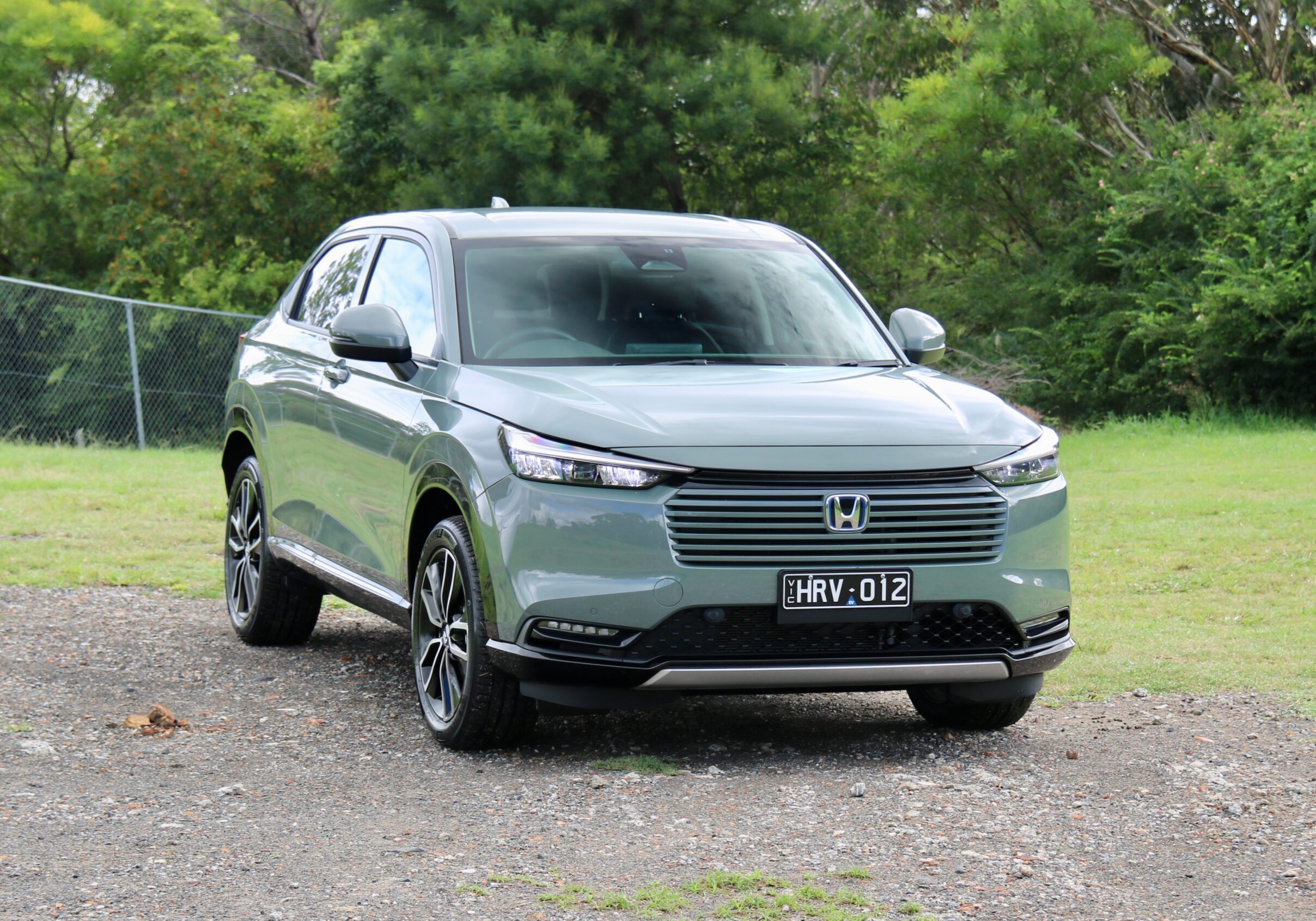
- Price: From $32,900 drive away (Vi X)
- Drivetrain: 1.5L 4-cylinder petrol or hybrid engine, 89kW/145Nm or 96kW/253Nm, CVT auto
- Combined fuel economy, CO2 emissions, fuel type: 4.3L-6.2/100km, 98-142g/km, 91RON
- Warranty: Five-year/unlimited km, five years roadside assistance
- Five-year service cost: $995 ($199 per year)
| Driving | |
|---|---|
| Interior | |
| Practicality | |
| Overall value |
Things we like
- Very practical, especially with the ‘Magic’ seats
- Comfortable and easy to drive
- Hybrid is very efficient
Not so much
- Only a four-seater
- No spare wheel
- Petrol engine is underpowered
Standing for “high-riding revolutionary vehicle”, the Honda HR-V small SUV was originally introduced in 1999 and two generations later, the HR-V has just been given a mild update with styling tweaks, some new equipment and a new mid-spec model. Pricing starts at $32,900 drive away, though for the better equipped hybrid, you’ll be spending at least $39,900 drive away.
The interior of the HR-V is typically Honda good quality, with cool touches like the climate control knobs lighting up blue or red when turning the temperature up or down, and side air vents that can be set to direct airflow towards the roof. The central touchscreen is a breeze to use, and features sat-nav, DAB+ and wireless smartphone mirroring across the range.
Turning to the back seat reveals the HR-V’s party piece in the small SUV segment: its excellent packaging. The rear seat is one of the roomiest in the segment with excellent legroom and headroom, while two adults will be quite comfortable – and that’s all you’re getting in there, because the HR-V is only a four-seater in Australia.
Making up for that slightly are Honda’s ‘Magic Seats’, which allow for a completely flat loading bay for when the rear seats are folded, but the cool trick is that the seat base folds up to rest against the backrest, allowing for taller items to be carried in the rear cabin. The boot is not massive at 304 litres, though that extends to a large 1,274L with the rear seats folded. Annoyingly though, there’s no spare wheel.
The driving experience of the HR-V is positive – the petrol engine feels a bit underpowered in anything other than urban driving, but the hybrid is noticeably better and far more efficient, rated at just 4.3L/100km for fuel consumption. It’s also refined and reasonably fun to drive, and quite comfortable. Honda’s five-year warranty can be extended to eight years in total, while the $199 cost for each of its first five services is quite cheap too.
MG ZS Hybrid+
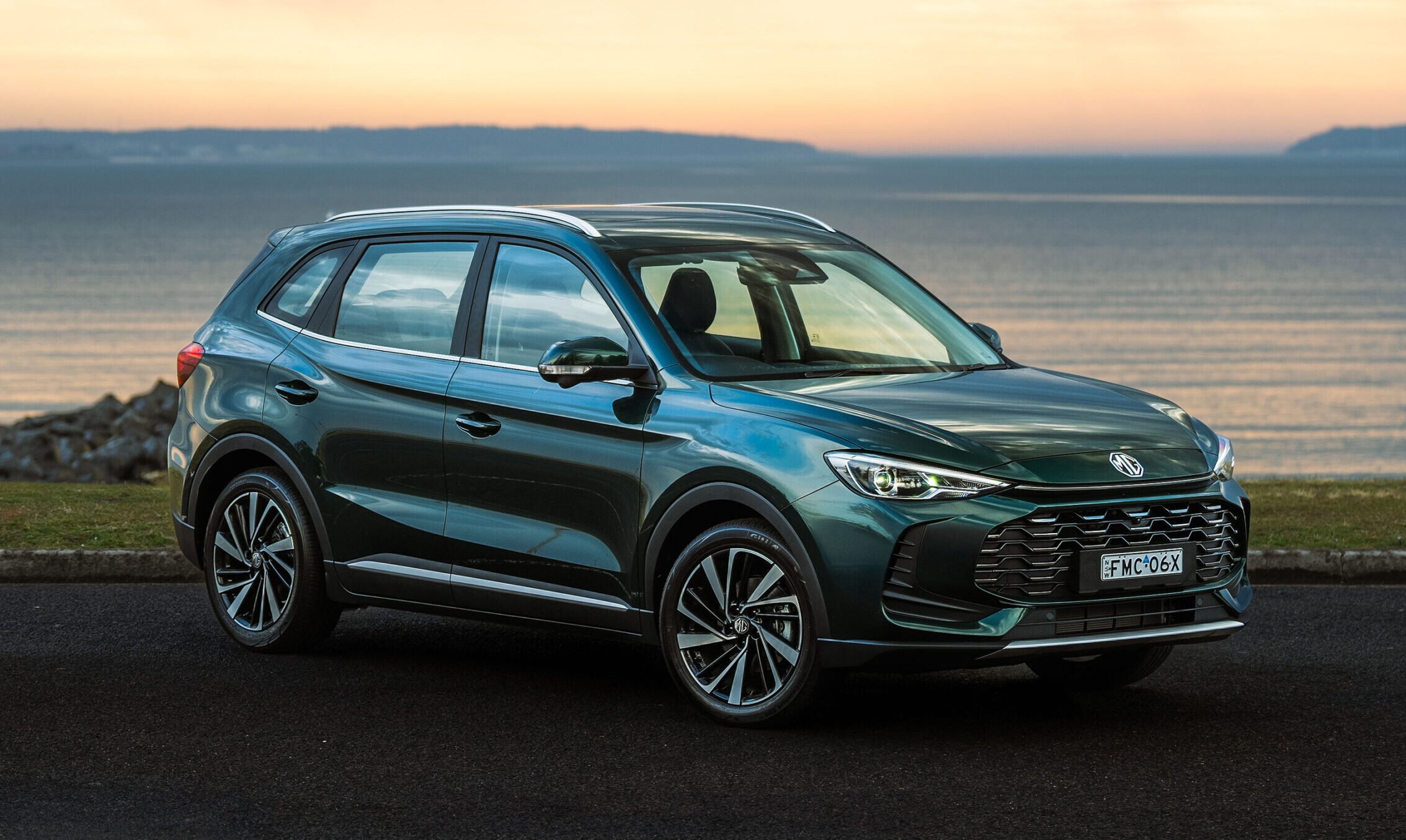
- Price: From $33,990 drive away (Excite)
- Drivetrain: 1.5L 4-cylinder hybrid, 158kW/465Nm, 3-speed CVT auto
- Combined fuel economy, CO2 emissions, fuel type: 4.7L/100km, 110g/km, 95RON
- Warranty: 10-year/250,000km, one year of roadside assistance
- Five-year service cost: $1,995 ($399 per year)
| Driving | |
|---|---|
| Interior | |
| Practicality | |
| Overall value |
Things we like
- Big improvement on the previous ZS
- Enlarged size adds more interior space
- Hybrid is punchy and efficient
Not so much
- Intrusive active safety systems
- Too much reliance on touchscreen
- Finicky steering wheel buttons
The second-generation MG ZS first launched in Australia in November 2024 in Hybrid+ spec priced from $33,990 drive away. Petrol-powered models have just arrived and lower the price of entry significantly to just $26,990 drive away, but we think the Hybrid+ is worth the extra spend.
While not as cheap as the ZST, the new ZS is better equipped and it’s also larger and more refined. The cabin is more modern with higher quality materials, while the growth spurt has allowed for a larger rear seat and boot – the size has increased from a healthy 359 litres to a large 443L with the seats up, for example.
The infotainment system has upgraded to MG’s latest unit, which is much easier to use than the system in the ZST and while it doesn’t feature smartphone mirroring that’s wireless, it’s still got sat-nav, digital radio and access to the company’s ‘iSmart’ live services so that owners can lock and unlock the car, turn on the climate control to warm or cool the car before getting in and even check where the car is.
On the road, the new ZS Hybrid+ presents a compelling option in the small SUV segment as it’s more comfortable than the ZST and CX-3, and is a generally relaxing car to drive. The 1.5-litre hybrid drivetrain is powerful making 158kW, yet efficient rated at just 4.7L/100km. The only annoyance comes from the lack of steering wheel reach adjustment – just like the ZST – and the overactive speed limit assistance, which makes a fuss if you travel even 1km/h above the speed limit.
But the new MG ZS Hybrid+ is a big improvement on the car it replaces and in the $30,000-$40,000 small SUV segment, does quite well overall. It offers more space and more equipment than a lot of rivals, an industry-leading warranty and cheap servicing, now with 15,000km intervals.
Toyota Corolla Cross
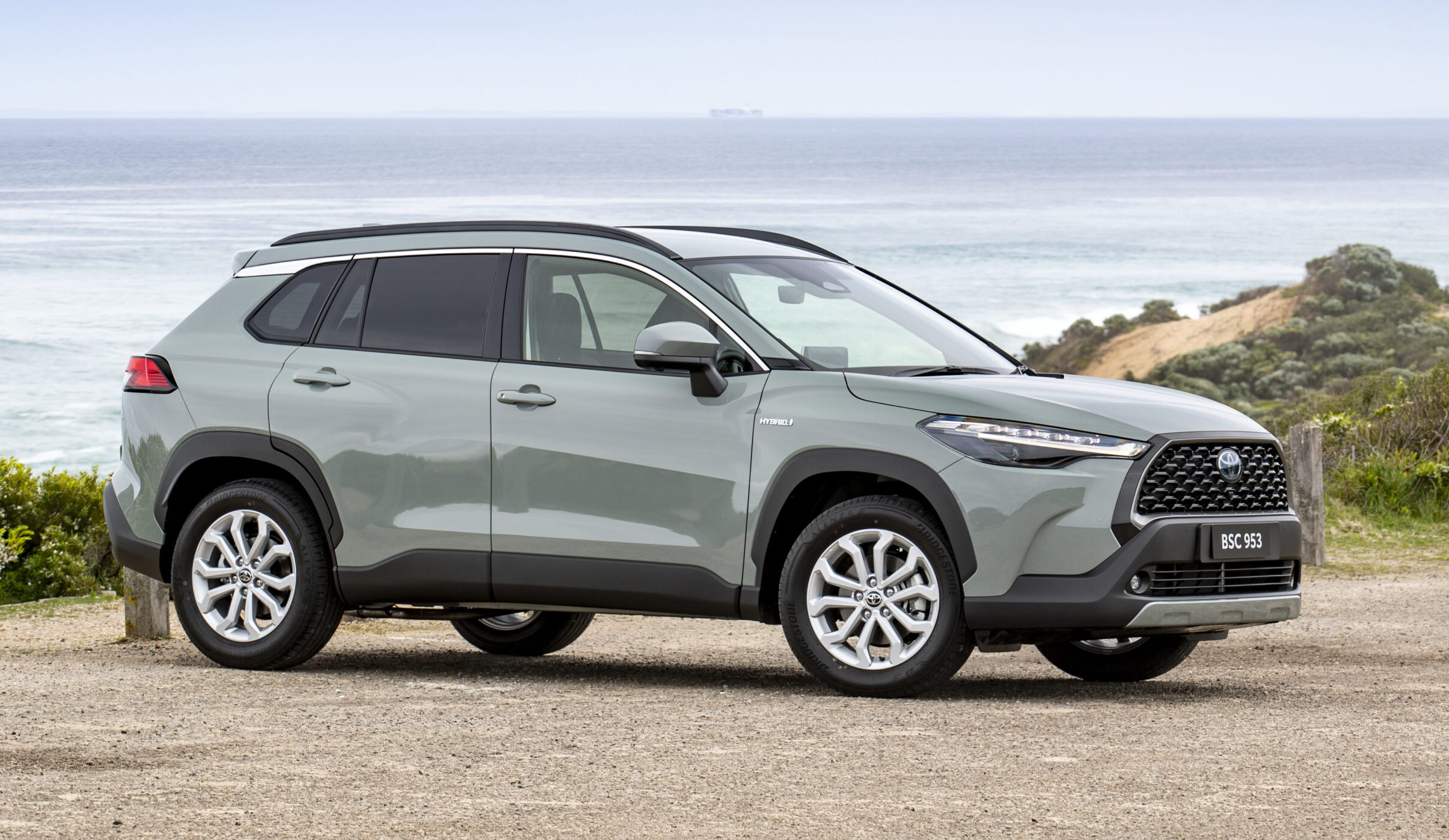
- Price: From $36,480 plus on-road costs (GX)
- Drivetrain: 2.0L 4-cylinder hybrid, 146kW, CVT auto, 2WD or AWD
- Combined fuel economy, CO2 emissions, fuel type: 4.3-4.4L/100km, 97g-101g/km, 91RON
- Warranty: 5-year/unlimited km, 8-year/160,000km battery warranty, optional assistance
- Five-year service cost: $1,275 ($255 per year)
| Driving | |
|---|---|
| Interior | |
| Practicality | |
| Overall value |
Things we like
- Well sized and practical
- 2.0-litre hybrid is punchy but quite efficient
- Good to drive with great handling
Not so much
- Lots of equipment reserved for top-spec Atmos
- Expensive pricing across the range
- Small 36-litre fuel tank in 2WD models
It’s not unusual for manufacturers to offer multiple models in the same segment and Toyota is one such manufacturer: in the small SUV segment, it offers not only the Yaris Cross and C-HR, but also the Corolla Cross, the latter of which is the largest and most practical Toyota small SUV offering.
Priced from $36,480 plus on-road costs for the entry-level GX, like its siblings, the Corolla Cross is hybrid-only and in this case, is only available with the larger 2.0-litre hybrid drivetrain, making a healthy 146kW – or the same power as the turbocharged 1.6L Kia Seltos. Both front- and all-wheel drive are available on the mid-spec GXL and top-spec Atmos as well.
The cabin of the Corolla Cross is quite similar in look to the regular Corolla with an almost identical dashboard layout, though the lower centre console is taller and more practical. There’s plenty of cabin space in the Corolla Cross too, particularly in the rear, while the boot measures from a small 380 litres in the top-spec Atmos AWD to a healthier 425L in the GX and GXL 2WD models.
The driving experience of the Corolla Cross is not the most refined, but the ride quality is compliant and mature on higher-speed roads, while the handling – particularly in the AWD models with their multi-link rear suspension set up – is enjoyable as well.
As you’d expect for a Toyota, the servicing is cheap at just $1,275 for the first five years and servicing at a Toyota dealership extends the mechanical warranty to seven years in total, and the battery warranty to 10 years in total if annual battery checks are performed. It’s clear that while the Corolla Cross’ pricing is not cheap, its running costs are low and that’s in addition to its other attributes: it’s practical, good to drive and a great all-rounder.
Mitsubishi Eclipse Cross Plug-in Hybrid
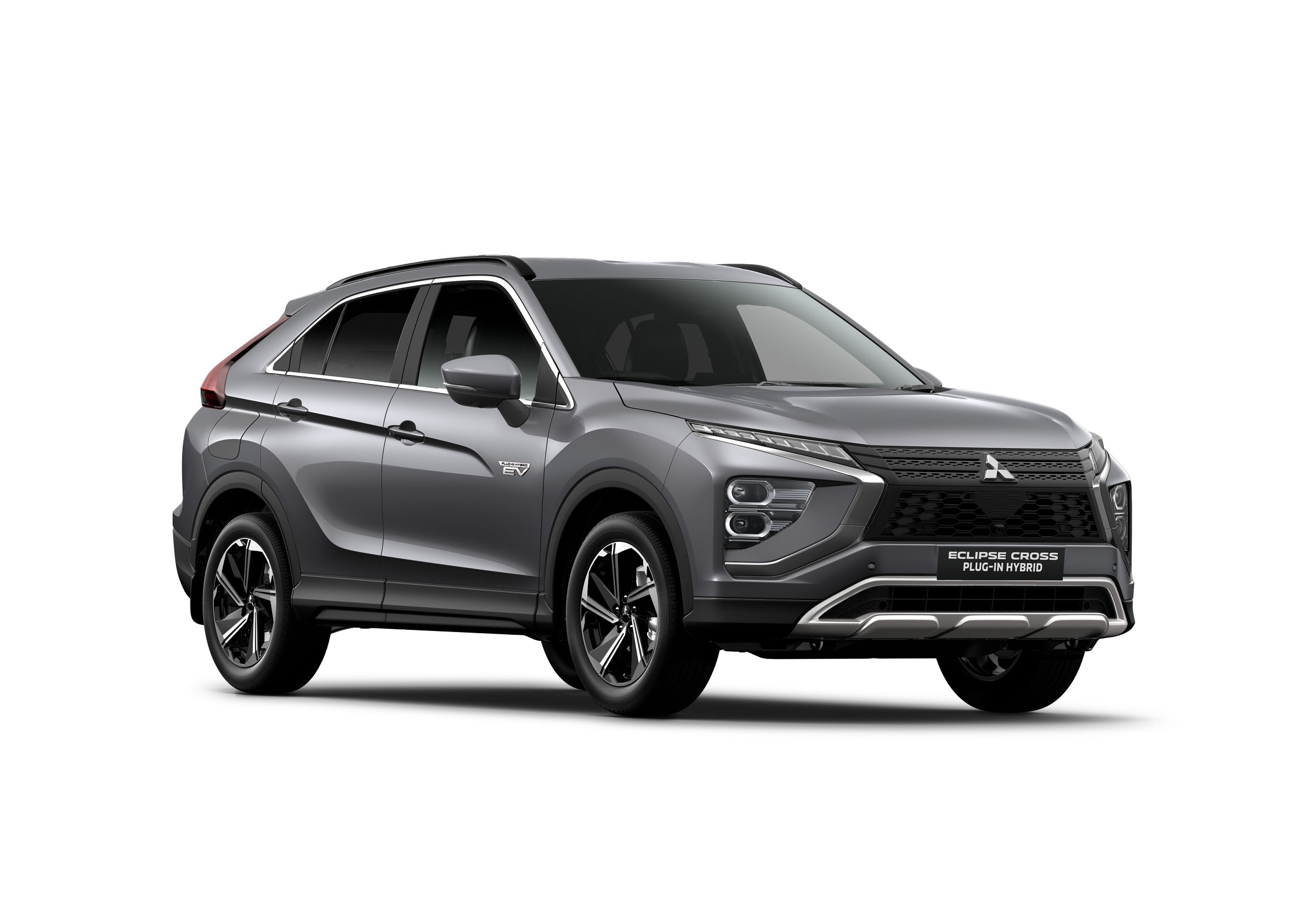
- Price: From $47,790 plus on-road costs (ES PHEV)
- Drivetrain: 2.4-litre 4-cylinder PHEV, 157kW/332Nm, CVT auto, AWD
- Combined fuel economy, CO2 emissions, fuel type: 1.9L/100km, 43g/km, 91RON
- Warranty: 5-year/100,000km extendable by dealer servicing up to 10-year/200,000km, 8-year/160,000km battery warranty, 12-month roadside assistance extendable up to four years
- Five-year service cost: $2,245 ($449 per year)
| Driving | |
|---|---|
| Interior | |
| Practicality | |
| Overall value |
Things we like
- Well sized and practical
- Plug-in hybrid a unique option for the price
- Well equipped across the range
Not so much
- Plug-in hybrid is expensive
- Dated interior technology
- Thirsty once battery has been depleted
Production for Australia has already stopped but the Mitsubishi Eclipse Cross still has appeal for small SUV buyers. Launched in 2017 as the slightly larger and more premium sibling to the big-selling ASX, the Eclipse Cross features a practical cabin that can comfortably carry four adults and their luggage.
The cabin of the Eclipse Cross feels a bit dated in parts like the basic touchscreen, but it’s ergonomically sound and the seats are comfortable. The quality is reasonable, with lots of soft touch points, and it’s certainly more upmarket than the ASX that sits below it in price. Its 405-litre boot is a good size for the segment as well.
Pricing starts at $31,990 plus on-road costs for the entry-level ES petrol, and buyers can choose from not only multiple models but also different drivetrains, including a plug-in hybrid that’s priced from $47,790 +ORC.
The 2.4-litre plug-in hybrid drivetrain in the Eclipse Cross range is refined and gutsy, and can impressively be DC fast charged. Mitsubishi says that it can cover around 50km of electric driving before needing the petrol engine to help too, and we found that fairly accurate in the real world. The driving experience is softer and less well damped than a lot of rivals, but it’s still comfortable enough. It’s not sporty like the Eclipse name suggests, but the plug-in hybrid and its cool all-wheel drive system can be fun to drive.
Where the Eclipse Cross has more appeal is in its aftersales program with a five-year warranty that can be extended to 10 years in total with dealer servicing. Add in low capped price servicing and it’s easy to see with the Eclipse Cross has appeal to small SUV buyers.
Nissan Qashqai e-Power
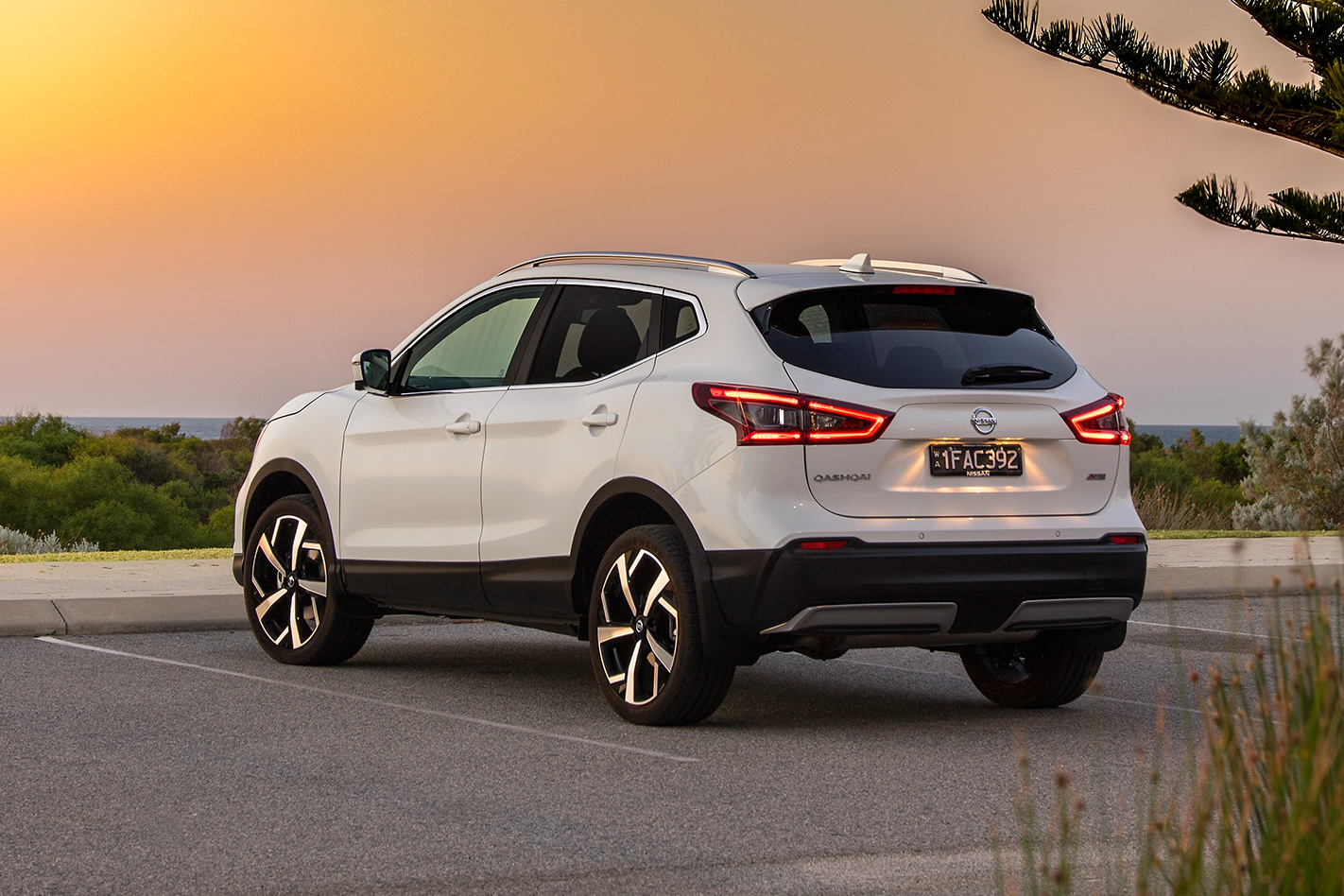
- Price: From $34,060 plus on-road costs (ST)
- Drivetrain: 1.3L turbo 4-cylinder or 1.5L turbo hybrid 3-cylinder, 110kW/250Nm or 140kW/330Nm, CVT auto
- Combined fuel economy, CO2 emissions, fuel type: 5.2-6.1L/100km, 117g-138/km, 95RON
- Warranty: Five-year/unlimited km extendable to 10-years/300,000km with servicing through Nissan, 12 months of roadside assistance
- Five-year service cost: $1,995 ($399 per year)
| Driving | |
|---|---|
| Interior | |
| Practicality | |
| Overall value |
Things we like
- Unique e-Power hybrid drivetrain option
- High quality interior, even in base model
- Facelift adds value to the range
Not so much
- Expensive at the top of the range
- Cheapest hybrid is still over $52,000 drive away
- Needs premium unleaded fuel
The Nissan Qashqai – formerly Dualis in Australia – is a car that we think should sell stronger. While its 6,560 units sold in 2024 were reasonable, it has more sales potential and the recent facelift should help thanks to an improved value equation, particularly at the entry level where a lot more standard equipment did not – surprisingly – lead to a price rise.
The cabin of the Qashqai is one of the highest quality in the segment thanks to plenty of soft touch materials and lively damped switchgear. A 12.3-inch touchscreen is now standard across the range and it’s more modern than the former system formerly used in lower models – it’s crisp and well-featured. The rear seat of the Qashqai is reasonably spacious and will fit two adults fine, and the boot measures a healthy 479 litres with the seats up and 1,422L with them folded.
Under the bonnet of the Qashqai is a choice of two engines: a 1.3-litre turbo four-cylinder or a 1.5-litre turbo three-cylinder hybrid, with both driving only the front wheels through a CVT automatic transmission. Both need premium unleaded fuel, but both are quite fuel efficient – especially the hybrid in the real world.
On the road, the Qashqai impresses with a mature and refined driving experience that feels quite European, which is no surprise given that it was built there and designed for those roads. Both available drivetrains feel peppy for the segment, and impress with their low end grunt. Even the CVT transmission is mostly un-CVT like in its operation thanks to well defined stepped ratios.
Nissan’s five-year warranty can impressively be extended to 10 years in total if serviced through a Nissan dealership, while the brand has also improved its five-year service cost at just $1,995. Overall, the Qashqai is a classy and refined entrant to the segment that deserves more love from buyers. It’s well rounded with a great cabin, reasonable practicality, a solid driving experience and gutsy drivetrains, including the unique range-extended hybrid system. While it’s still not cheap to buy, the recent facelift improved the value equation and it’s a more worthy buy as a result.
Toyota C-HR

- Price: From $42,990 plus on-road costs (GXL)
- Drivetrain: 1.8L or 2.0L 4-cylinder hybrid, 103kW or 146kW, CVT auto, 2WD (1.8L) or AWD (2.0L)
- Combined fuel economy, CO2 emissions, fuel type: 4.0-4.1L/100km, 89g-94g/km, 91RON
- Warranty: 5-year/unlimited km, 8-year/160,000km battery warranty, optional assistance
- Five-year service cost: $1,275 ($255 per year)
| Driving | |
|---|---|
| Interior | |
| Practicality | |
| Overall value |
Things we like
- Exotic styling
- 2.0-litre hybrid is punchy but quite efficient
- Good to drive with great handling
Not so much
- Rear seat and boot are small
- Expensive to buy
- Appalling rear visibility
The C-HR was actually Toyota’s first modern-day small SUV sold locally, slotting beneath the then-current RAV4 mid-sizer upon its release in 2017. Fast forward to now and not only does Toyota have two other small SUVs in its line-up, but the C-HR is also now even more exotic to look at and – thanks to a new production source – more expensive than its siblings.
Priced from $42,990 plus on-road costs – or at least $10,000 more than when the first-generation model was released – the new C-HR is available in three models: base GXL, mid-spec Koba and top-spec GR Sport. The GXL and Koba use a 1.8-litre hybrid drivetrain and the GR Sport a larger 2.0-litre unit, and while the smaller engine is totally fine, the larger one is a spritely performer. Both are quiet efficient and will happily return under 5L/100km in the real world without trying.
The interior of the C-HR is Toyota’s most driver-focused cabin in years with a clear dashboard angling towards the pilot. Material quality – particularly in the Koba and GR Sport – is pleasing, with lots of soft touch materials used. The new 12.3-inch touchscreen is quite responsive and bright, as well as fully featured, while the front cabin is quite practical as well with lots of storage space. The rear seat, however, is cramped and while two adults will fit, it’s a bit claustrophobic. The boot measures from 362 litres in the GR Sport to 388L in the GXL – the GXL is also the only model with a spare wheel.
Toyota’s five-year warranty is pretty standard nowadays, though dealer servicing increases the mechanical warranty to seven years and the battery warranty to 10 years in total, and while roadside assistance is optional, servicing is cheap at just $255 each for the first five years/75,000km (whichever comes first).
Overall, the C-HR is much the same as it’s ever been, though with even more style this time around. It’s pleasurable to drive, good quality, well equipped and cheap to run, if not cheap to buy, nor that practical. If you’re after a more practical or better value alternative, Toyota will sell it to you, but there’s no denying that the new C-HR has appeal.
Kia Niro Hybrid
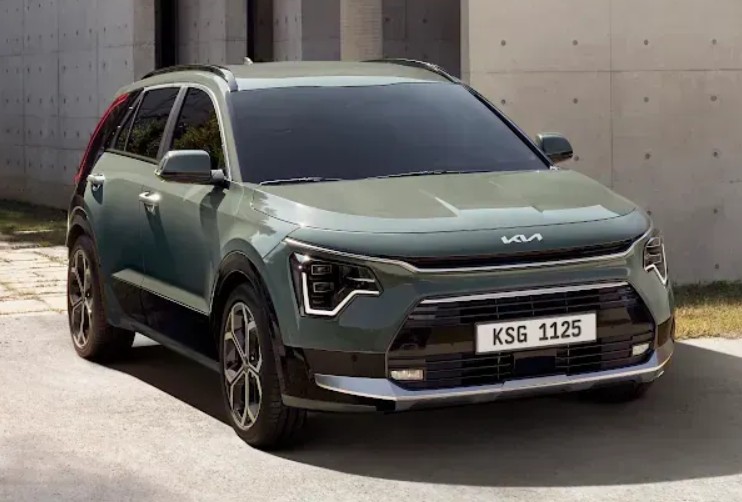
- Price: From $45,000 plus on-road costs (S)
- Drivetrain: 1.6L 4-cylinder hybrid, 104kW/265Nm, 6-speed dual-clutch auto
- Combined fuel economy, CO2 emissions, fuel type: 4.0L/100km, 91g/km, 91RON
- Warranty: 7-year/unlimited km, 8-year/160,000km battery warranty, 12 months’ assistance extendable with dealer servicing up to eight years in total
- Five-year service cost: $2,849 ($569 per year)
| Driving | |
|---|---|
| Interior | |
| Practicality | |
| Overall value |
Things we like
- Handsome styling
- Hybrid drivetrain works well
- Good to drive with a great ride
Not so much
- Expensive across the range
- Expensive to service as well
- Cheaper non-hybrid Seltos is more practical
The Kia Niro is the brand’s unique hybrid and electric small SUV that differs from the larger, cheaper and petrol-only Seltos. Priced from $45,000 plus on-road costs in hybrid form, the Niro can also be had as an EV and both are available in either base S or top-spec GT-Line form. Both the S and GT-Line are relatively well equipped, though the S still lacks features like a leather steering wheel or LED headlights, making the $5,650 jump to the GT-Line worth it in our view.
The cabin of the Niro is funky and much better quality than the basic Seltos’ cabin, with more soft touch surfaces in order with its more expensive pricing and higher-tech drivetrains. Its front cabin is also more practical than the Seltos with lots of storage, though the rear seat and boot aren’t quite as large. Measuring 425-litres with the seats up, the Niro’s boot is average in size.
On the road, the Niro range shows off its Australian-tuned suspension with excellent ride and handling that shames a lot of competitors. The hybrid drivetrain isn’t the quickest, but has more than enough grunt for most buyers. Helping the drivetrain is a six-speed dual-clutch automatic transmission that differs from rivals as it’s not a CVT, but that makes it feel more natural.
Kia’s industry coverage is above average in this company, though its service pricing is expensive at almost $570 per year. Thankfully, its real world low fuel useage will help pay for that, but it should be cheaper to own.
The Kia Niro has a lot going for it, including a handsome design, practical and tech-filled cabin, a peppy and efficient drivetrain and a long warranty. Counting against it is its expensive pricing, expensive service costs and that its ICE-powered Seltos sibling – let alone the Hyundai Kona Hybrid that it shares so much with under the skin – is less expensive to buy.
Peugeot 2008
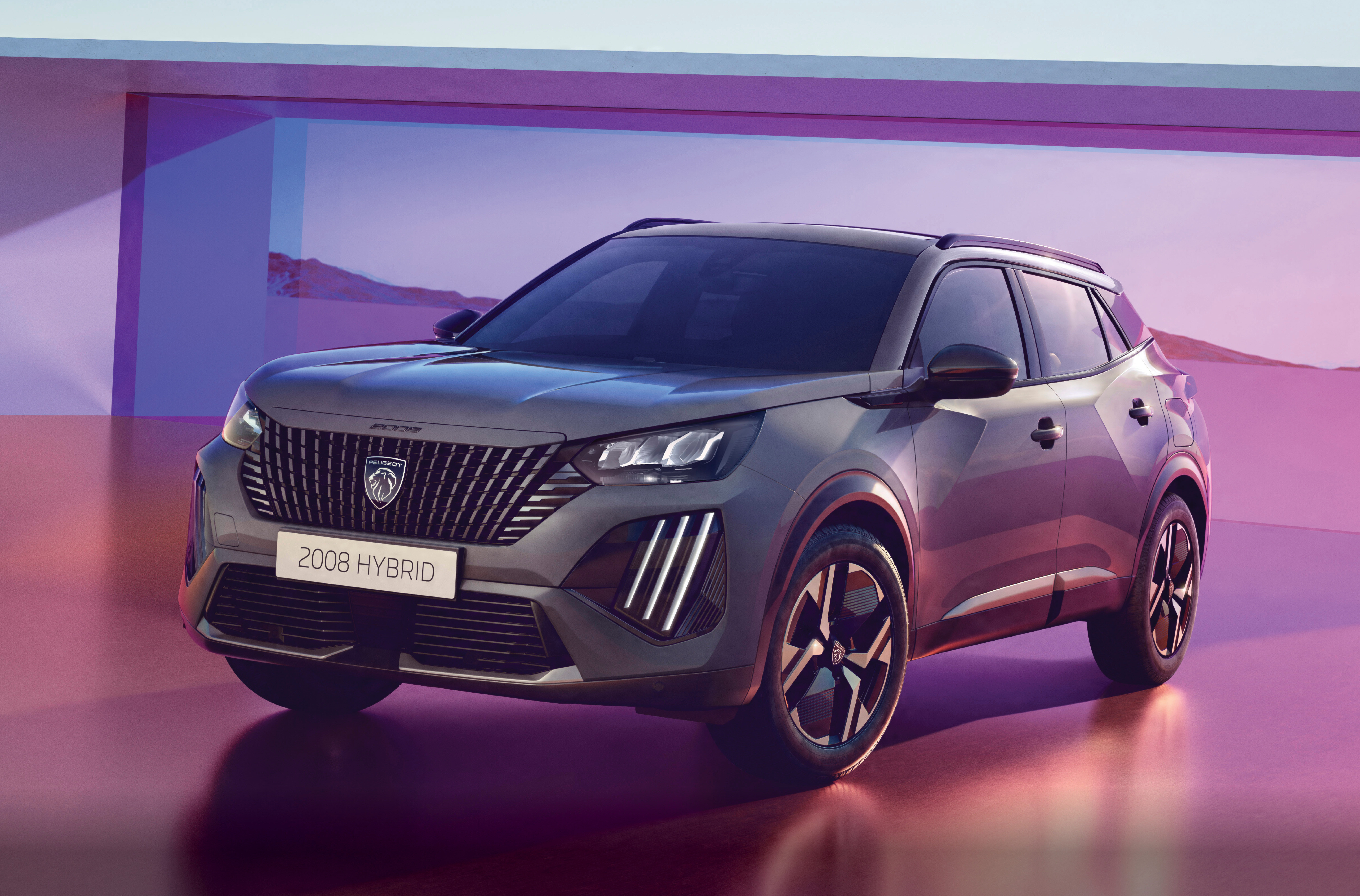
- Price: From $42,490 plus on-road costs (Allure)
- Drivetrain: 1.2L turbo 3-cylinder hybrid, 100kW/230Nm, 6-speed dual-clutch auto
- Combined fuel economy, CO2 emissions, fuel type: 4.4L/100km, 99g/km, 95RON
- Warranty: 5-year/unlimited km, 5-year roadside assistance
- Five-year service cost: $1,780 (service plan – $356 per service)
| Driving | |
|---|---|
| Interior | |
| Practicality | |
| Overall value |
The Peugeot 2008 is one of the brand’s most popular products in Australia. It recently received a mid-life facelift with new styling, new features and a new model line-up, and now it’s also getting a new 48V mild-hybrid drivetrain. But unlike most other mild hybrid drivetrains, the 2008’s is capable of powering the car by itself like a typical Toyota or Honda drivetrain.
Because of that, the 2008 Hybrid’s fuel consumption is rated at just 4.4L/100km – or almost 2L/100km less than the pre-update pure-petrol model that was actually less powerful at 96kW versus 100kW now. The new mild-hybrid drivetrain’s electric motor contributes an extra 51Nm of torque from 0rpm, making for smoother progress than the regular turbo-petrol engine, and the new six-speed dual-clutch transmission should be faster than the older regular auto.
Its interior is full of interesting materials like suede, leather and even lime green stitching on the upper-spec GT, plus it’s super practical with ample storage in the front. It uses a 10-inch touchscreen that’s well featured and easy to use, though some of the interior buttons could be more ergonomically pleasing to use. The rear seat of the 2008 is tighter than some rivals, though two adults will be fine, and its healthy 434-litre boot opens up to a large 1,467L with the rear seats folded.
On the road, the 2008’s ride quality impresses thanks to its suppleness – it doesn’t pretend to be all sporty, it’s just quite comfortable. It also handles well, and its refinement is excellent as well. The 2008 is covered by an industry-average five-year/unlimited km warranty, though with five years of roadside assistance and overall, while it’s not cheap to buy, we think the Peugeot 2008 Hybrid is definitely worth considering if you’re after an expensive-looking, efficient, comfortable and good quality small SUV.
Cupra Formentor VZe
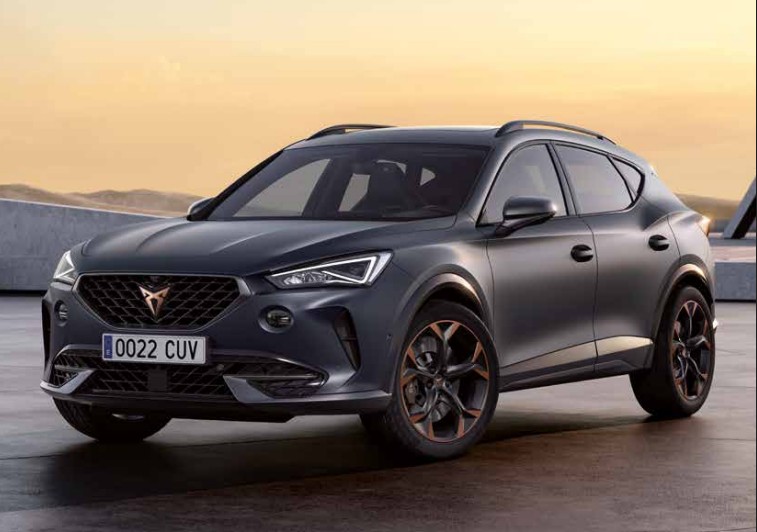
- Price: From $64,990 plus on-road costs
- Drivetrain: 1.4L turbo 4-cylinder plug-in hybrid, 180kW/400Nm, 6-speed dual-clutch auto
- Combined fuel economy, CO2 emissions, fuel type: 1.9L/100km, 43g/km, 95RON
- Warranty: 5-year/unlimited km, 5-year roadside assistance
- Five-year service cost: $1,990 ($398 per service)
| Driving | |
|---|---|
| Interior | |
| Practicality | |
| Overall value |
Things we like
- Handsome styling
- Punchy drivetrains
- Fun to drive
Not so much
- PHEV battery reduces boot capacity and removes spare wheel
- Leather package should be standard
- Back seat not huge
Sexy Spanish Volkswagen Group offset Cupra has only joined the Australian new car market for a few years but it’s already offering a solid range of products. The Formentor is just one of them, combining a turbocharged either 2.0-litre (V, VZx) or 1.4-litre petrol engine with an electric motor (VZe PHEV). The VZe’s 12.8kWh battery allows for a claimed electric range of 58km.
The Formentor’s driving experience is great with a typically-VW Group solid feel from behind the wheel, though with extra fun and sharper handling. The ride is firm but still comfortable, and the rear visibility is good as well. The active safety features are impressively well tuned and not annoying.
The cabin of the Formentor is good quality, practical and full of tech like the large 12-inch touchscreen and 10.25-inch digital driver’s display with plenty of configurability. In-car storage is good, and while the rear seat could be larger, it’s still comfortable for two adults and features air vents, charging and even a separate climate zone.
Cupra covers its products with a five-year/unlimited km warranty with five years of roadside assistance. A five-year/75,000km service package costs a reasonable $1,990.
Overall, the Cupra Formentor impresses with its fun driving experience, its quality cabin, practicality, long equipment list and reasonable service pack pricing. While the rear seat and boot could be larger, it’s still worth of consideration if you’re after a hybrid small SUV.
Land Rover Range Rover Evoque PHEV

- Price: From $106,334 plus on-road costs (P300e HSE)
- Drivetrain: 1.5L turbo 3-cylinder plug-in hybrid, 227kW/540Nm, 8-speed auto
- Combined fuel economy, CO2 emissions, fuel type: 2.1L/100km, 48g/km, 95RON
- Warranty: 5-year/unlimited km, 5-year roadside assistance
- Five-year service plan cost: $2,100 ($420 per service)
| Driving | |
|---|---|
| Interior | |
| Practicality | |
| Overall value |
Things we like
- Punchy drivetrains
- Excellent cabin quality
- Surprisingly thrifty to service
Not so much
- PHEV drivetrain is expensive
- Still quite a lot of optional extras to choose from
- PHEV drivetrain only available in higher models
Since the first-generation model went on sale in 2011, the Range Rover Evoque can only be regarded as a success, having sold over one million units. Buyers clearly wanted the luxury feel they’d expect from the Range Rover brand but in a smaller package.
Fast forward almost 15 years and now we’re seeing Evoque generation two, which grew slightly in dimensions compared with generation one, but is even more luxurious inside. Thankfully, too, Land Rover significantly simplified the Evoque’s lineup – at launch in 2020, there were 26 individual variants to choose from but now there are just five: the ‘P250’ petrol engine in SE, HSE or Autobiography specs, and the ‘P300e’ PHEV drivetrain in either HSE or Autobiography. Simple.
The PHEV drivetrain combines a turbocharged 1.5-litre three-cylinder petrol engine with an 85kW electric motor that draws power from a 15kWh battery, giving a WLTP-rated electric range of 62km. Combined with the petrol engine, the Evoque P300e makes 227kW/540Nm, comfortably more than the 184kW/365Nm 2.0-litre turbo-petrol engine. The Evoque’s driving experience is very comfortable and it handles pretty well too.
Inside the Evoque is a quality cabin with lots of exotic materials and big screens that are easy to use. The seats are very comfortable, and the back seat is also reasonably spacious too given the Evoque’s smaller dimensions – two six-footers will be fine. The Evoque’s 472-litre boot is good for its size, though it only opens up to 1,156L with the rear seats folded.
The Evoque still provides a comfortable and luxurious entrant to the Range Rover line-up. It uses a powerful, refined and efficient plug-in hybrid that offers a good all-electric range, it drives well and its cabin quality is excellent. The boot could be larger, however, and it’s also more expensive than it used to be, while still too many features remain optional. But get past those issues and there’s a lot to like about the Evoque.
Lexus LBX

- Price: From $47,550 plus on-road costs (Luxury)
- Drivetrain: 1.5L 3-cylinder hybrid, 100kW, CVT auto
- Combined fuel economy, CO2 emissions, fuel type: 3.8L/100km, 85g/km, 91RON
- Warranty: 5-year/unlimited km, 5-year roadside assistance
- Five-year service plan cost: $2,975 ($595 per service)
| Driving | |
|---|---|
| Interior | |
| Practicality | |
| Overall value |
Things we like
- Handsome and cute styling
- Awesome efficiency
- Fun to drive, good handling
Not so much
- Not cheap to buy or service
- Small rear seat, small boot
- Top spec model misses out on features like a sunroof
The Lexus LBX is the brand’s smallest ever product. Sitting underneath the already-small UX, the LBX is short for “Lexus Breakthrough Crossover” and is heavily based on the Toyota Yaris Cross, though has completely bespoke styling and a new interior compared with its cheaper cousin. The LBX’s cabin quality is generally quite good with ample soft touch materials, and higher quality screens than the Yaris Cross.
The rear seat, however, is small and while the front-drive model’s 402-litre boot is larger than you’d expect, the all-wheel drive reduces that to just 315L. Still, you can tell Lexus tried hard to make the LBX’s cabin as practical as possible and it features plenty of storage space, including an under-dashboard tray and door bins that can hold 600ml bottles. The rear seat also includes two USB-C chargers.
There are two trim levels of LBX offered in Australia for now, with the 100kW 1.5-litre four-cylinder hybrid drivetrain common to both – the top-spec Sports Luxury can be optionally had with all-wheel drive as well. A fire-breathing LBX Morizo – with the same turbocharged 1.6-litre petrol drivetrain as the GR Yaris – is due locally later this year.
As we’ve seen from most other new Toyota and Lexus products over the past decade, the LBX’s driving experience is better than you might expect. It’s fun to drive and encourages you to drive it harder, while it’s also very easy to manoeuvre at lower speeds. The ride quality is a bit unsettled at lower speeds, but as you’d expect for a Lexus, it’s still quite comfortable.
If its size suits you, the Lexus LBX is a good option to consider in the small SUV segment. Based on the already well-rounded Yaris Cross, the LBX adds more refinement, more luxury feel, more features and is even better to drive. Like the Yaris Cross, it’s super practical and its hybrid drivetrain is very fuel efficient. It predictably costs more to buy and service, but against premium rivals, remains good value for money.
Lexus UX
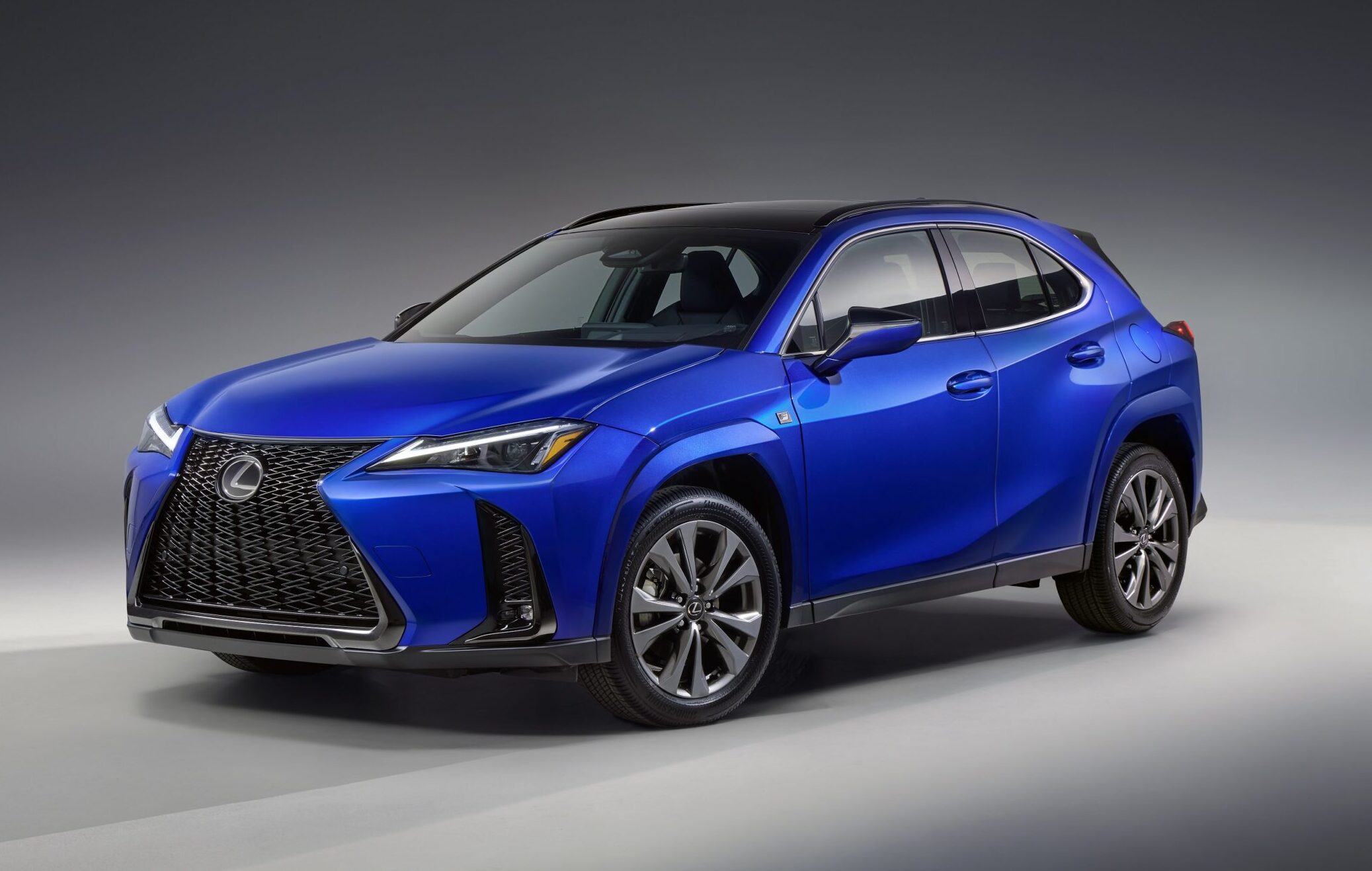
- Price: From $55,370 plus on-road costs (Luxury)
- Drivetrain: 2.0L 4-cylinder hybrid, 146kW, CVT auto
- Combined fuel economy, CO2 emissions, fuel type: 4.2L/100km (2WD)-4.4L/100km (AWD), 99g/km, 91RON
- Warranty: 5-year/unlimited km, 5-year roadside assistance
- Five-year service plan cost: $2,975 ($595 per service)
| Driving | |
|---|---|
| Interior | |
| Practicality | |
| Overall value |
Things we like
- Recently upgraded drivetrain stronger yet more efficient
- Excellent interior quality
- Nice to drive – comfortable and fun
Not so much
- Cramped rear seat and boot
- Gets expensive at the top of the range
- Enhancement packages should be standard
The Lexus UX was the brand’s first properly small SUV when it went on sale locally in 2018. Using the then-new TNGA platform from parent company Toyota that revolutionised the way its products rode and handled, the UX was a great preview to the company’s next-generation cars.
Some seven years later, the UX has recently been updated with a more powerful and more efficient hybrid drivetrain and new interior tech such as a brand new infotainment system. Making a powerful 146kW of power, the base UX is now badged ‘300h’ thanks to its power increase from the former UX250h. Yet its fuel efficiency dropped to just 4.2L/100km, a figure that’s fairly easy to achieve in the real world.
As we’ve seen in various other Lexus and Toyota products, the use of the TNGA platform delivers a more than proficient ride and handling. It’s very comfortable, but keen drivers will appreciate how fun it can be from behind the wheel.
The cabin of the UX is excellent quality with plenty of soft touch materials, even on the entry-level UX Luxury. Move up the range to the Sports Luxury or F Sport and even more luxury features like full leather trim and a ‘Kashoku’ door garnish are added for a bespoke feel. The new 12.3-inch touchscreen system is a big step forward on the screen in the pre-updated model too – it’s much faster to use and is equipped with more features.
If there is a downside to the UX’s cabin it’s that it doesn’t feel very spacious. The smaller Audi Q2, for example, offers more rear space than the UX. In front-drive form, the UX’s 368-litre boot is smaller than even the smaller LBX and the high floor means that it isn’t that practical. But there’s still plenty to like about the Lexus UX like its lovely driving experience, quality cabin and very efficient drivetrain.
Best Small SUV series
Looking to get into a brand-new small SUV? Our stories below will guide you to the model that best suits your needs!

